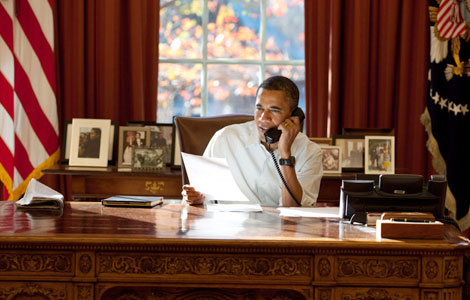Forbidden City to be closed every Monday
Updated: 2014-01-07 00:55
By Sun Yuanqing (China Daily)
|
||||||||
|
 |
|
Workers clean Taihe Dian, or the Hall of Supreme Harmony, in the Forbidden City on Monday. The museum will now be closed for the entire day every Monday to give staff members enough time to thoroughly maintain relics. Liu Chang / For China Daily |
The Forbidden City, also known as the Palace Museum, expanded its closures from Monday afternoons to the entire day, a move the museum said will better preserve its relics and allow enough time each week to maintain them.
"We want to give the architectural and cultural relics a break. But it's not a break for the museum staff. In fact, there is a ton of work to do on Mondays so that the visitors can experience a safer and better Palace Museum," said museum director Shan Jixiang.
The museum, which announced the expanded closures on Monday, had been operating all year round since the 1980s but began to close its doors every Monday afternoon last year to allow for maintenance and housecleaning, Shan said.
Staff members start their housecleaning from the central axis of the palace. In Taihe Dian, or the Hall of Supreme Harmony, where the emperors once held ceremonies, the floor's "golden bricks" have to be cleaned with mops soaked in kerosene.
Previously, the bricks were only cleaned shortly before visitors arrived at 8:30 am, but now staff members have an entire day each week to clean the tiles. Shan said this is the first time that the museum has had enough time to thoroughly clean Taihe Dian in 10 years.
"In ancient times, it took nine years to manufacture these bricks. Once they are damaged, it is impossible to fix them because they are no longer made and cannot be replaced," he said.
The Dragon Throne of the Emperor of China, which features nine wooden sculptures of dragons, is dusted with banister brushes and cotton swabs.
The Forbidden City served as the imperial palace for the Ming (1368-1644) and Qing (1644-1911) dynasties. With 980 buildings and an area of 720,000 square meters, it is considered the largest existing ancient wooden structure in the world.
Fire safety is a key concern for the museum. Temporary housing used as ticket offices are constructed of flammable material. Such housing will be removed and replaced with buildings of safer materials, Shan said. The museum also launched a fire drill on Monday.
All of the exhibition cabinets, interior lighting, signage and posters will be examined and refurbished. The new signage will echo the palace's interior.
The museum is slated to examine any damage to the walls in the palace this year. Repairs will begin next year.
The museum is planning to change the exhibition in the Antiquarium on a monthly basis, Shan said. The exhibition in the Antiquarium has not been changed since 2006 because many of the exhibits like silk and paper are not suitable to be exposed to the air for a long period of time.

 China destroys 6.1 tons of seized ivory
China destroys 6.1 tons of seized ivory
 Offices of world leaders
Offices of world leaders
 First Taiwan-born panda makes public debut
First Taiwan-born panda makes public debut
 India successfully launches heavy lift rocket
India successfully launches heavy lift rocket
 Xuelong waits for chance to break free
Xuelong waits for chance to break free
 Fewer candidates take graduate entrance test
Fewer candidates take graduate entrance test
 Frigate escorts transport of Syria chemical weapons
Frigate escorts transport of Syria chemical weapons
 Putin, Belarussian president play ice hockey
Putin, Belarussian president play ice hockey
Most Viewed
Editor's Picks

|

|

|

|

|

|
Today's Top News
Congress to begin 2014 with jobless benefits battle
Merkel fractures pelvis skiing, cancels visits
Israeli ex-PM Sharon's condition in steady decline
Small plane crashes in Colorado
NYC Chinatown weathers killer storm
Program helps ex-inmates find work
'Life-threatening' cold bites US Midwest
Backing out of China to reshore
US Weekly

|

|





